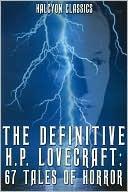
What’s The Call Of Cthulhu all about?:
The Call of Cthulhu tells the story of a man who when searching through his deceased uncle’s belongings, finds a wealth of information on a cult that is so terrifying that he wishes he had never read the papers in the first place.
What did I think?:
This is the fourth story that I have read in the Lovecraft collection, and like the others, it begins with a male unnamed narrator who is searching through the papers of his recently deceased uncle. What he finds there both surprises and shocks him as his uncle seems to have been hiding an immense secret that, on reflection, should stay hidden as long as possible, as the consequences of that knowledge seems to lie in death for the owner. The Call of Cthulhu is made up of a few different parts that link together as a whole, and as a result, seems to feel a lot longer than the typical Lovecraft short story. The first part, entitled The Horror In Clay, describes the unexpected death of the narrator’s great-uncle, Professor Angell, an expert in ancient inscriptions. As our narrator begins to work through his documents, he finds a box which appears to have been locked twice, as if no-one should ever be able to open it. Sadly, our narrator’s curiosity wins the day, and on opening the box he finds a queer clay object with extensive hieroglyphics and a sculpted figure which can only be described as a monstrosity. The writings that accompany the object are disjointed, rambling and disturbing and refer to a CTHULHU CULT with extensive notes on two other gentleman, Wilcox and Legrasse.
This part of the story then focuses on Wilcox, a young man who brings the mentioned sculpture to the Professor in order that he may decipher the hieroglyphics. The Professor notes that Wilcox appears dreamy and confused and confesses to making the sculpture himself after dreaming the previous night of old cities, strange words (Cthulhu fhtagn) and:
“a gigantic thing “miles high” which walked or lumbered about.”
Wilcox later succumbs to a period of delirium to which he is bed-bound and on further enquiry, the Professor discovers that other men across the country have had similar dreams, vivid and stronger at the height of Wilcox’s delirium. Stranger still, a large proportion of these men report similar images and sounds to Wilcox, with an acute fear of the gigantic nameless thing, leading to one man going violently insane screaming to be saved from some “escaped denizen of hell.” The press cuttings that the Professor has kept show similar and worrying incidents across the globe, some cases even resulting in suicide.
The second part of the story is entitled The Tale of Inspector Legrasse where the Professor’s notes speak of a police officer who is in possession of a strange statuette, seized in a raid on a voodoo meeting in the swamps of New Orleans. Legrasse hopes to get some answers about the old relic, in hopes of tracing a supposed cult to their beginnings. Again, the figure represents a hideous monster and cryptic writing that does not seem to have any origins in the history of civilization. The professor again notices similarities between the idol that the cult worships and the strange language that they speak which can be translated to:
“In his house at R’lyeh dead Cthulhu waits dreaming.”
The Inspector begins to tell his tale of coming across a band of worshippers practicing a voodoo more evil than has ever been seen and with the power to drive a man insane. On interrogation, the imprisoned members of the cult speak of the Great Old Ones whose dead bodies told their secrets by dreams to man to form a cult all over the world until the time when Cthulhu would arise from his mighty city under the waters and once again control the earth. The matter of the cult fascinates our narrator and he decides to investigate further, certain that there must be a plausible explanation for everything. After discovering the terror that plagued a crew of sailors in The Madness from the Sea, by meeting with the sailors themselves (well, those who survived anyway) and also talking at length with Wilcox, the original study of his great-uncle, he begins to fear and believe the worst. He now realises that the Professor’s death was not entirely natural and knowledge such as he now possesses means that he too, may be not long for this world.
I have to admit that this story probably isn’t my favorite in the bunch so far but it is hugely fascinating. I enjoyed the way in which Lovecraft divided the story into different parts which all appeared to come together so seamlessly to tell the story of Cthulhu. As with the other Lovecraft stories I have read, there is no overt horror and a lot of things are implied, leaving the readers imagination to run riot. Personally, I didn’t find it as eerie as his other stories but he did manage to bring a little shiver down my spine with the rich vocabulary he uses to describe monstrous beings. It’s definitely a story that you can read with the light on but I think you will still be mulling it over for a while once finished.
Would I recommend it?:
Maybe!
Star rating (out of 5):

NEXT SHORT STORY: The Common Enemy by Natasha Cooper from the collection The Mammoth Book Of Best British Crime Volume 7.

